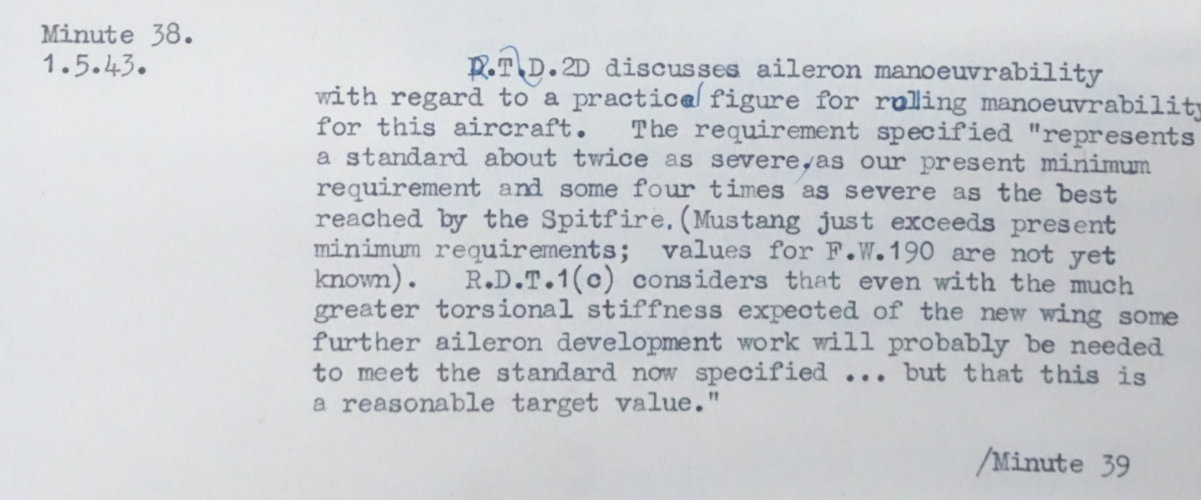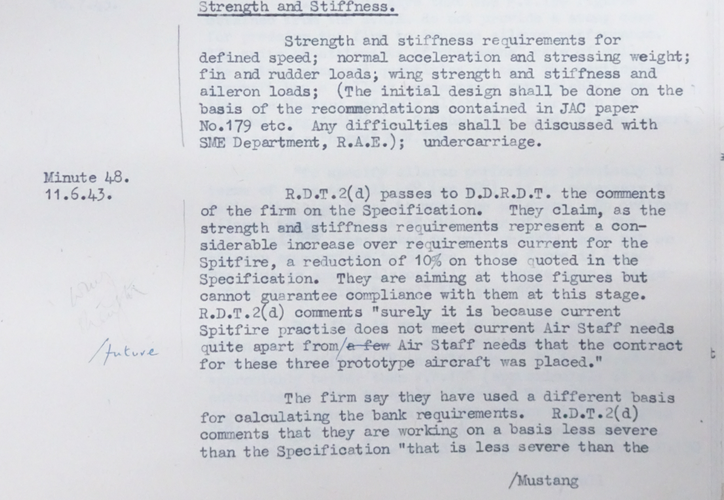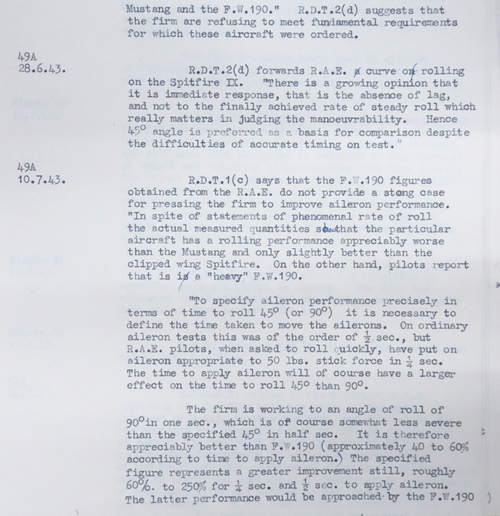"Redesigned late wing
As the Spitfire gained more power and was able to fly at greater speeds the risk of aileron reversal was increasing so the Supermarine design team set about redesigning the wings to counter this possibility. The original wing design had a theoretical aileron-reversal speed of 580 mph (930 km/h), which was somewhat lower than that of some contemporary fighters.[8] The new wing of the Spitfire F Mk 21 and its successors was designed to help alleviate this problem; the wing's stiffness was increased by 47 per cent and a new design of aileron using piano hinges and geared trim tabs meant the theoretical aileron-reversal speed was increased to 825 mph (1,328 km/h).[8][9][10] This wing entered service on the Spitfire XXI. The standard armament was now four 20mm Hispano IIs or the shorter, lighter Hispano V cannons, each with 150 rounds per gun."
This is from Wikipedia (I know). So would that mean that this Spitfire wing had surpassed all other WW2 fighter wing designs in stiffness?
Taken these numbers it must have given the Spit a tremendous advantage at roll rate and in a dive recovery.
Has anybody the stiffness/aileron reverse rates of other fighters?
As the Spitfire gained more power and was able to fly at greater speeds the risk of aileron reversal was increasing so the Supermarine design team set about redesigning the wings to counter this possibility. The original wing design had a theoretical aileron-reversal speed of 580 mph (930 km/h), which was somewhat lower than that of some contemporary fighters.[8] The new wing of the Spitfire F Mk 21 and its successors was designed to help alleviate this problem; the wing's stiffness was increased by 47 per cent and a new design of aileron using piano hinges and geared trim tabs meant the theoretical aileron-reversal speed was increased to 825 mph (1,328 km/h).[8][9][10] This wing entered service on the Spitfire XXI. The standard armament was now four 20mm Hispano IIs or the shorter, lighter Hispano V cannons, each with 150 rounds per gun."
This is from Wikipedia (I know). So would that mean that this Spitfire wing had surpassed all other WW2 fighter wing designs in stiffness?
Taken these numbers it must have given the Spit a tremendous advantage at roll rate and in a dive recovery.
Has anybody the stiffness/aileron reverse rates of other fighters?



